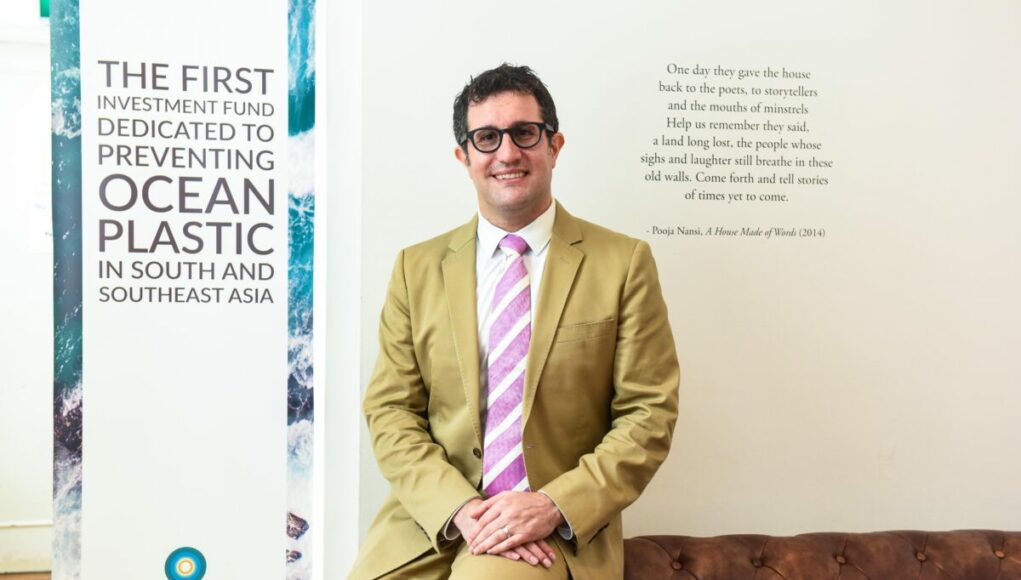INTERVIEW with Rob Kaplan, Founder and CEO of Circulate Capital. For further expert opinions please use the question-level hyperlink.
| Why should plastic waste be seen as an investment opportunity by institutional investors?
In short, because it is an underinvested, recession-resistant sector that we believe can generate competitive financial and environmental returns. According to Ocean Conservancy, 75% of the plastic in the ocean was never collected as part of a formal waste management system, and 60% originates from five countries in Asia – China, Indonesia, the Philippines, Thailand and Vietnam. This research also shows that we can reduce by 45% the global plastic leakage into the ocean by investing in waste management and recycling in these five countries. And even more if we invest in the circular economy. We observed that investment in waste collection and management systems across South and Southeast Asia (SSEA) has not kept pace with those economies’ increased consumer consumption growth and thus there is a key role for investors to provide the resources needed to develop sustainable waste management and recycling solutions that prevent leakage of plastic occurring.
Institutional investors are currently not enabled to fund solutions at scale because they don’t have the experience and access to the information and tools they need, such as a visible pipeline or investment track records. This results in a failure of connection between capital and businesses.
By creating a new, blended financing mechanism, we seek to fill capital gaps and prove the investment market by financing opportunities that are scalable, impactful and begin delivering results from day one. Ultimately, our vision is to develop a circular economy whereby we can take old plastics and turn them into a new, reusable resource for future materials.
As we demonstrate investment viability of these markets and attract co-investors, we believe they will become attractive to institutional investors and that the allocation of public and private sources of capital required to build circular supply chains and prevent ocean plastic will be facilitated.
| Circulate Capital established the world’s first investment fund dedicated to preventing ocean plastic. Could you elaborate on your investment strategy and the challenges you’re dealing with?
We finance the holistic value chain – from innovative materials and business models to recycling and building markets that incentivize collection of waste to prevent it from contaminating the environment. We are building local, resilient economies and value chains. We focus on small and medium enterprises (SMEs) that turn local plastic waste into an opportunity for the benefit of the environment and the communities they work in. Our priority markets are India, Indonesia, Thailand and The Philippines and Vietnam and the SMEs goals are to improve collection, sort and recycle local plastic waste that in turn prevent plastic pollution in their respective countries.
Collection is a massively important because you can’t recycle plastic it if it’s not collected. That’s the front line and where the informal sector creates strengths and challenges. The strength is that the market in Asia is responsive. If I say I’m going to start paying 10 times as much for recycled bottles in the U.S., no one would change their behavior and not a single city would change the way it collects or manages waste. In Indonesia or the Philippines, armies of people who make their livelihood off that would respond. But there are challenges baked into that with at-risk populations, labor rights, and other social concerns that make engagement difficult.
| Already back in 2017 scientists warned of what they termed ‘circular economy rebound’, arguing that ‘circular economy activities can increase overall production, which can partially or fully offset their benefits’. Against the backdrop of circular economy-related discussions as part of sustainable recovery plans, do you find that the relevant risks are properly considered?
These types of arguments are important to consider because they emphasize the trade-offs inherent in circular economy and sustainability solutions. There is no silver bullet and we should always take into account unintended consequences or knock-on effects of interventions. But, we should be equally cautious of absolutist positions that assume something is always bad or always good. That can work in academic exercises, but in the real world, it is always much more complicated. The Pew Charitable Trusts and Systemiq’s recent research did a great job of exploring the risks and trade-offs and what they found is that single-solution pathways will be much less likely to achieve the outcomes we want compared to multi-solution pathways. We need to advance the circular economy AND we need other contributions as well.
| How would you assess the potential and role of alternative plastics industry, above all, in regard to circular economy considerations?
There is a significant amount of research being done in material science, which includes alternatives to fossil-fuel based plastics. There are lots of benefits, but for now it’s also unproven how the tech can scale. The main challenges are accessing the quality and quantity at the right price to make it work.
| about
Rob Kaplan is Founder and CEO of Circulate Capital. He established Circulate Capital to deploy catalytic capital in partnership with leading corporations and investors to scale solutions that advance the circular economy and prevent the flow of plastic waste into the ocean in South and Southeast Asia.
Rob leads Circulate Capital’s strategy, team, and operations as the firm identifies, incubates, and invests in opportunities diverting waste from the environment into the recycling chain in South and Southeast Asian countries. Circulate Capital’s model relies on supporting the local innovators implementing solutions on the ground, on partnerships with global corporations to leverage their supply chains to drive scale, and on incentivizing a new generation of entrepreneurs to build a fresh pipeline of investable projects.








